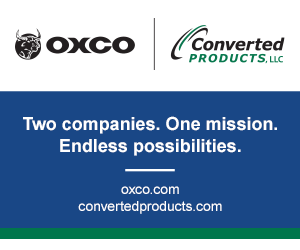Acquisition Pricing is at Record, but Unsustainable, Levels
- Published: February 08, 2007, By pffc-online.com
PRESS RELEASE, BY GEORGE SPILKA Acquisition pricing for middle market deals (those with a transaction price between $2-$250 million) is currently at a record level. The last time the middle market saw deal pricing anywhere near this level was in the middle-1980s. The current pricing level is not sustainable. When it ends, it is unlikely that we will see deal pricing at this level probably for at least 20 years.
The following table cites 4 recent deals that I am familiar (with):
| Type of Seller | Type of Acquirer | EBITA Mulitple(A) |
|---|---|---|
| Meat & Seafood Distributor | Strategic | 10.0 |
| Plumbing Distributor | Private Equity Group | 11.8 |
| Plastics Company | Strategic | 11.2 |
| Equipment Manufacturer | Private Equity Group | 10.7 |
| A—The EBITDA multiple represents the trailing 12 months EBITDA (TTM) as compared to the transaction price for the Company. Prior to 2005, except in unique situations, this multiple for middle market companies was unheard (of). | ||
The following are certain reasons that made this extreme, albeit unsustainable, level of acquisition pricing possible:
1. An excessive amount of capital is available in the financial markets. This has been caused by a record level of debt and equity available from numerous sources, including hedge funds, institutions and financial companies, amongst others.
2. The massive availability of debt, combined with other debt market factors, has produced very low interest rates for a sustained period. This low cost financing has enabled private equity firms to pay exorbitant prices for selling companies. The easy money policies of the Federal Reserve in the early-2000s and certain foreign financial market considerations helped create the environment that made this extremely high level of debt available.
3. Acquirers are currently consumed by excessive optimism about the economy's future and the likelihood of a "soft landing." They expect this to have a very positive impact on intermediate-term earnings and future growth possibilities. I question the likelihood of a strong intermediate-term economy. Personally, I think that an economy in recession some time during that period is more likely.
4. Many institutions, pension funds, and other sources of funds that once followed a more conservative investment policy have become obsessed with greed and have become envious of the current returns being made by private equity firms and hedge funds on their investments. These formerly conservative institutions have become very aggressive in the deployment of their capital. This has produced new large pools of capital to fund acquisitions. When many of the high-priced, risky acquisitions now being made "turn sour", this new source of money will likely dry-up.
5. The confluence of the above factors and certain others not listed due to space considerations has made private equity firms the major pricing factor in middle market deals. Due to factors previously defined, the pricing available from private equity firms in many, if not the majority, of the deals that I am now handling, is higher than the pricing available from most strategic acquirers. I have never seen this before in my 28 year investment banking career. Since the mid-1980's, with rare exceptions, I have not found private equity firms capable of paying a price competitive with that of an aggressive strategic acquirer. However the multiples that private equity firms are currently paying are driving up acquisition pricing and forcing strategic acquirers to match this level or forcing them to forsake growth from external expansion.
As previously mentioned, the middle market has not seen deal pricing even comparable to recent pricing since the leveraged buyout (LBO) craze of the middle-1980's, and we all know the sad ending of those deals for many acquirers and financiers. Many of these companies ended up in bankruptcy and the negative consequences on the overall economy contributed to the recession of the early-1990s. The end result of the current craze will likely be similar, except its magnitude will probably be greater.
The current level of middle market acquisition pricing is not sustainable. If this level of pricing ends in 3 months, 6 months, 18 months, or 2 years is open to debate. I think that it will probably end within a 6-12 month period. However what is not open to debate, is that when it ends, it will probably not be seen for another 20 years. Additionally, when reality sets in, the consequences to the US economy, and to many acquirers will be very negative.
When the current level of deal pricing ends, it will probably produce a decline in pricing of approximately 50% from current levels. After the initial dramatic impact, middle market deal pricing will probably eventually return to more traditional levels, which are 35-50% below the current pricing.
Prudent middle market owners, executives, or entrepreneurs that want to sell their company in the next 10 years should proceed with the sale immediately. To do otherwise, almost assures that when they decide to sell, the "window of opportunity" will have closed. Consequently, even if their company grows at or slightly above that expected during normal economic conditions, their Company will be worth considerably less than what it is now. Correspondingly, if you believe in the wisdom of the old adage "to sell high", the time to proceed is now.












